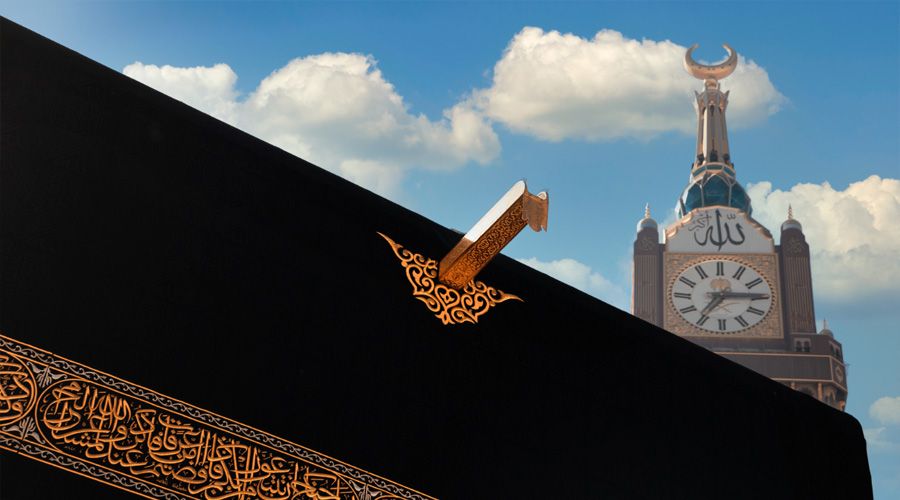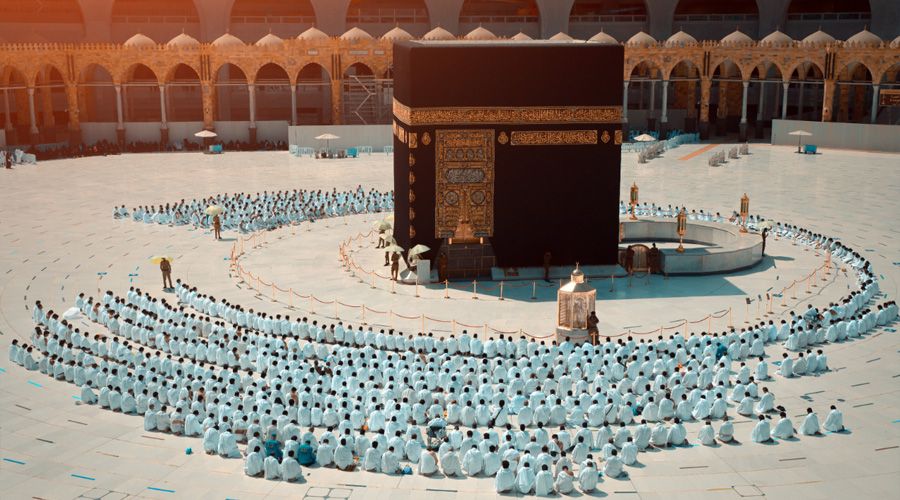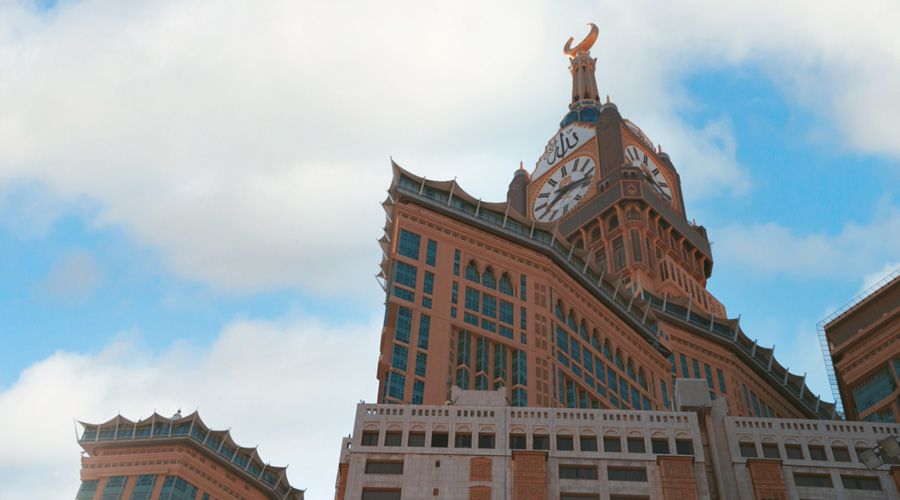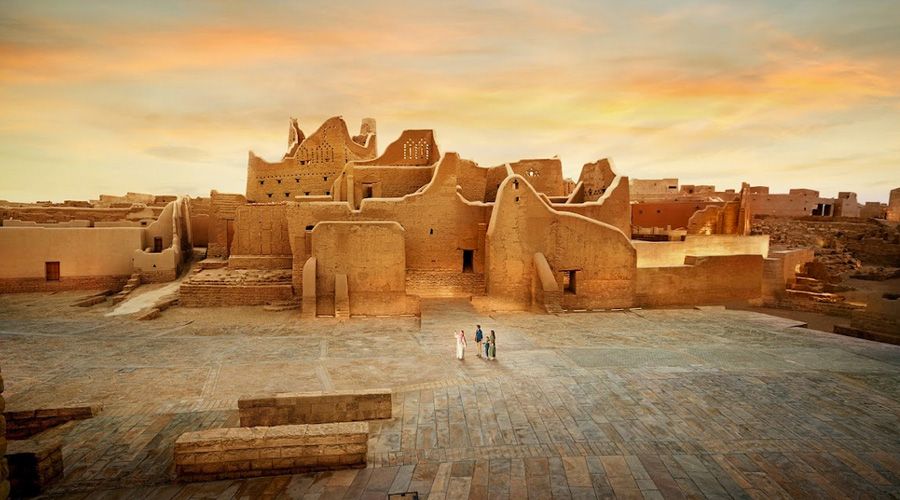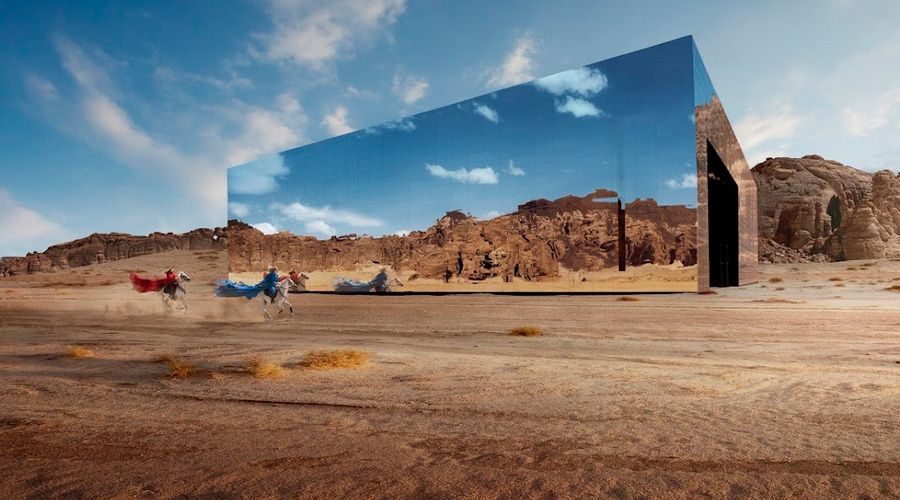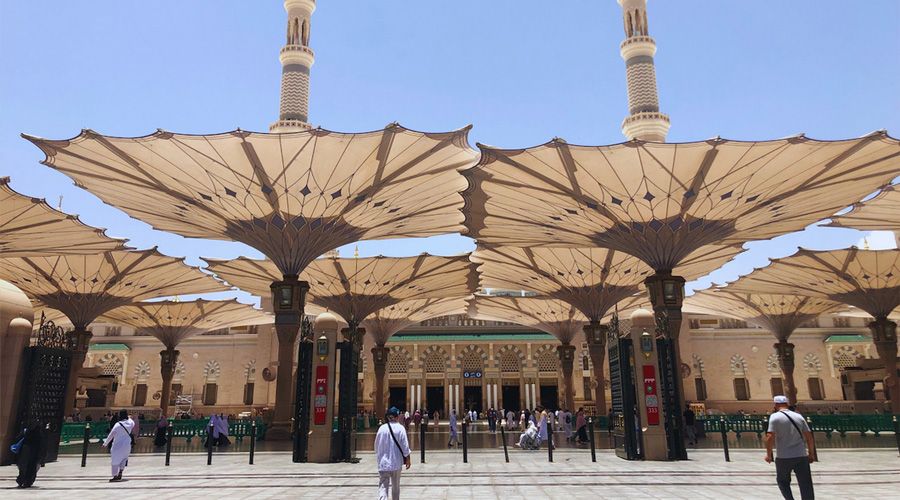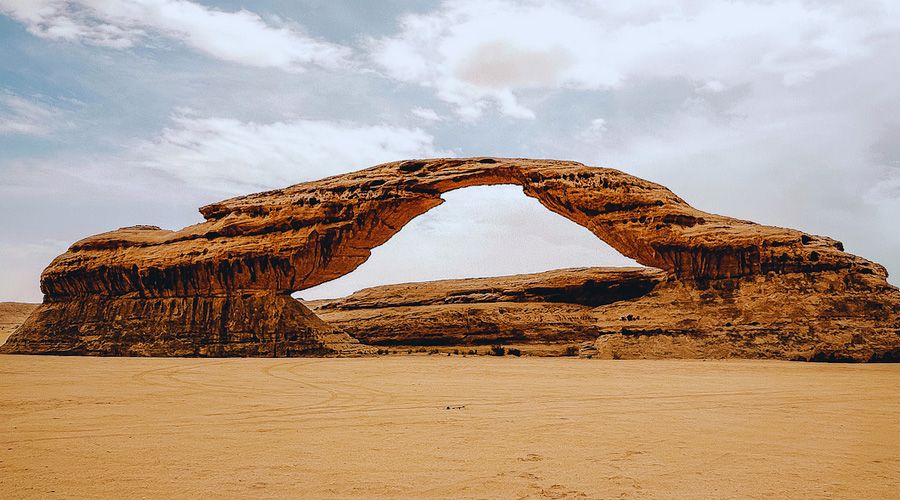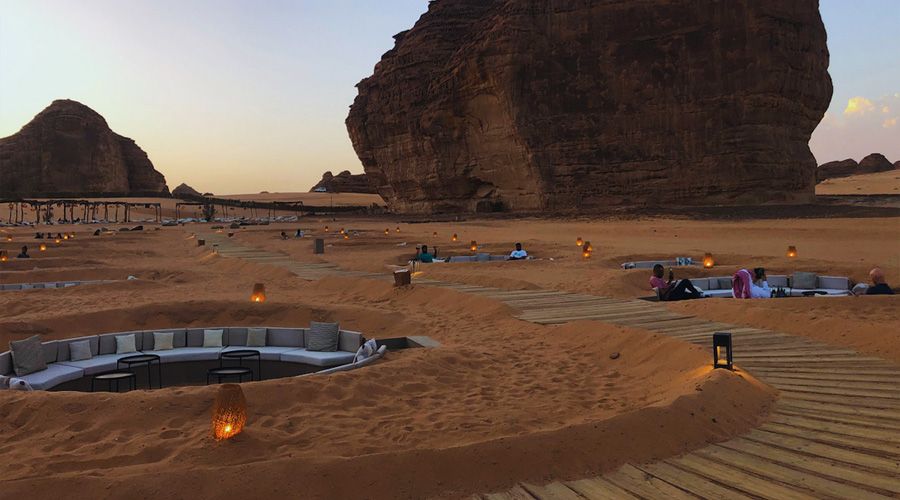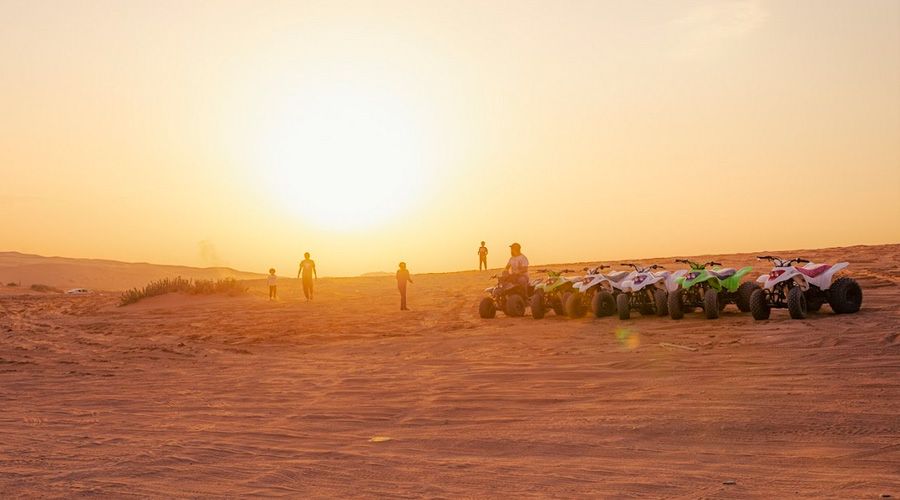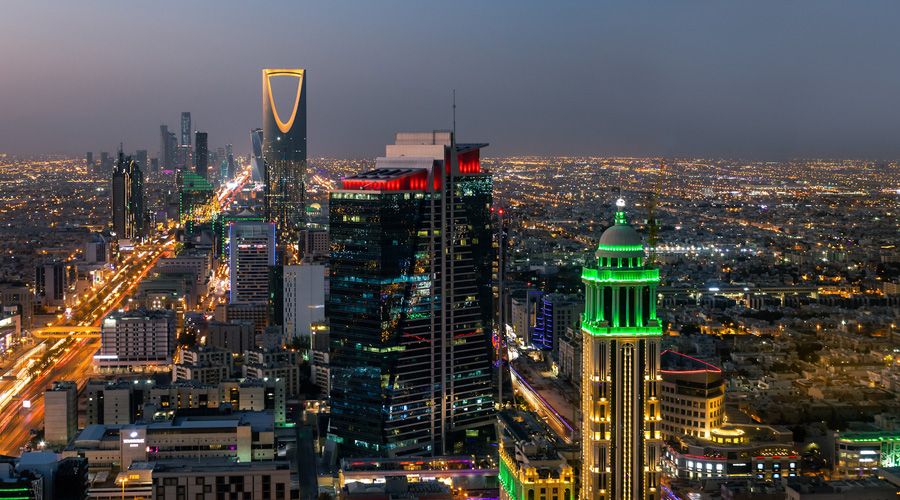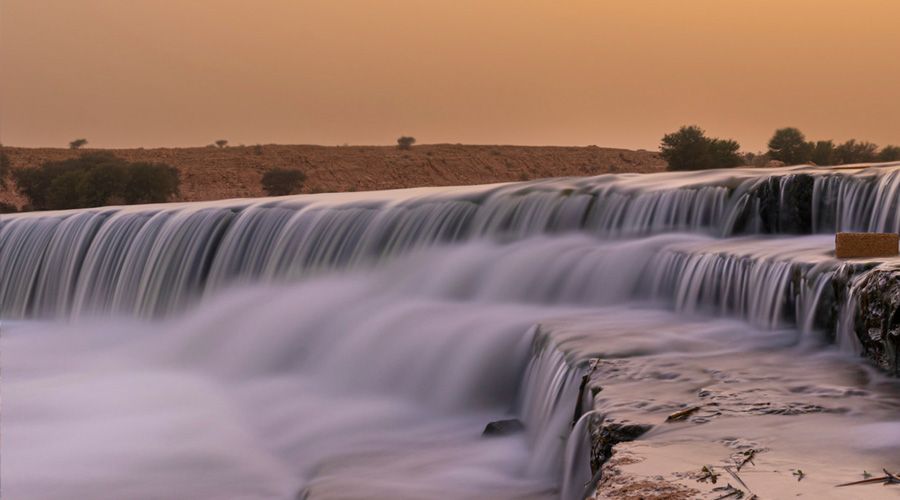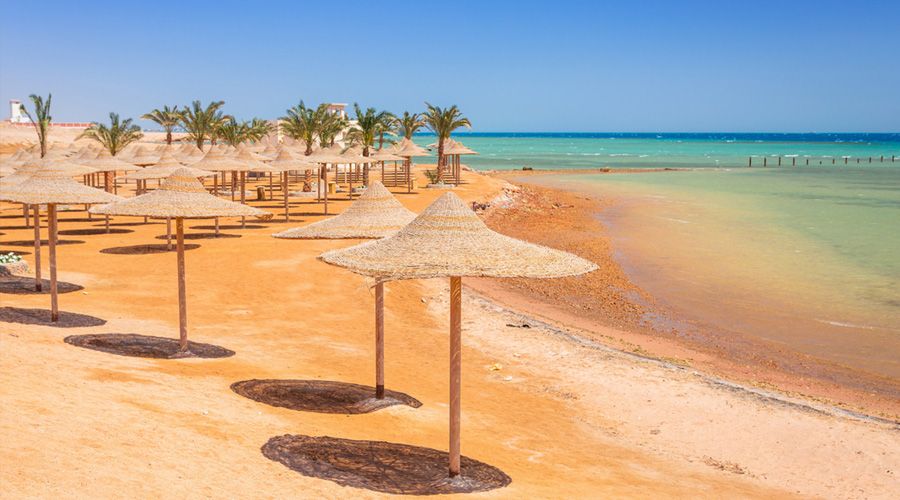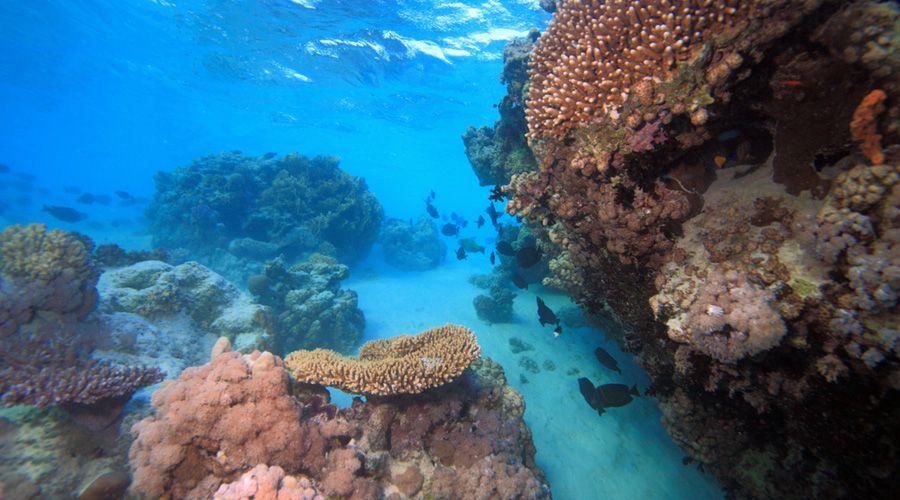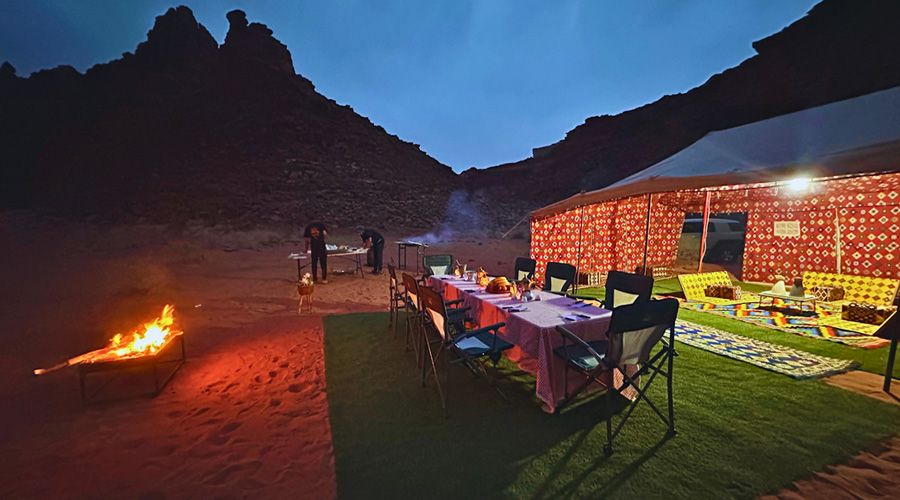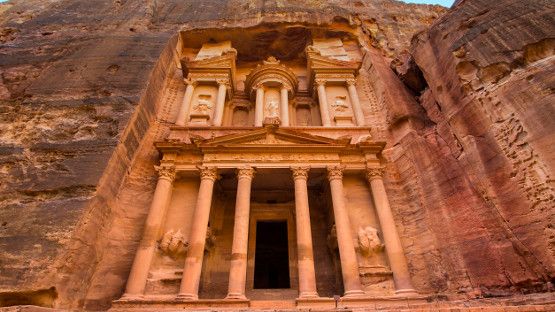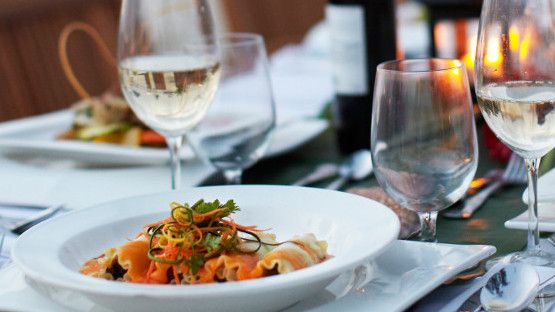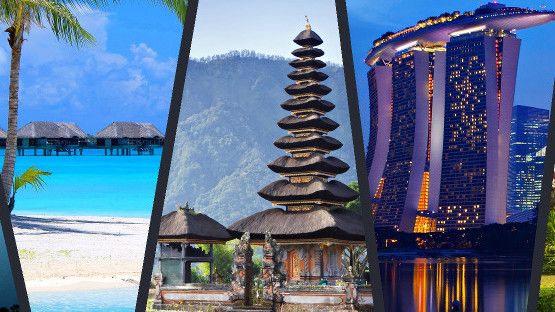- TOUR HIGHLIGHTS:
Embark on a transformative Umrah Plus journey through Saudi Arabia, blending sacred pilgrimage experiences and cultural discovery. After exploring Jeddah's highlights, spend five days in Mecca and Medina, performing Umrah and touring important landmarks. Round out the journey with visits to historic AlUla, captivating Wadi Disah and vibrant, modern Riyadh.
- Catch some sea breeze at Jeddah
- Explore Mecca and Medina with a Mutawwif
- Discover ancient desert civilizations in AlUla
- Live like a Bedouin in the private valley
- Experience Riyadh’s contemporary culture
Itinerary
Day 1: Arrival Jeddah
Welcome to Jeddah! Meet with a guide and drive in the arrivals hall and transfer into the city.
Located on Saudi Arabia’s western Red Sea coast, Jeddah is a commercial hub with the second busiest seaport in the Middle East. It’s the principal gateway to Mecca, the holiest city in Islam, and sees over a million pilgrims a year on their way to perform the Hajj. Despite this, Jeddah is perceived to be the most liberal city in Saudi Arabia and is a popular tourist destination, offering the beauty of ancient architecture mixed with the latest luxuries.
The journey begins with sunset drinks on the city’s attractive corniche. Take a stroll to admire the artworks in the ‘open air museum’ and spread out a carpet and takwa, , the smart Saudi picnic seat. Join the locals when the sun sets, the call for prayer sounds and the world's tallest fountain comes to life in front of the beachwalk. Complete the day with a welcome dinner in a modern style restaurant, befitting fast-paced Jeddah.
Overnight in Jeddah
Day 2: Jeddah
Start the day working on the Saudi bigger picture in the Tayebat museum to gain background about Islam, Saudi Arabia and Jeddah. The informative museum contains real-live, real-size examples of Saudi and especially Jeddahwi building styles, everyday tools and utensils, art and details about the Two Holy Cities; Mecca and Medina. which make a good base for a first talk about Islam. After visiting a selection of what is on display, let’s head out into the real Saudi!
Jeddah’s proximity to the Red Sea puts local seafood at the forefront. The Central Fish Market is the hotspot where buyers and sellers come together. Squid, shrimp, lobster and a great variety of fish, some only native to the Red Sea, are all fresh and on display. Follow the flow of the market where customers first choose their pick. Next they move on to have it weighed and get a ticket for the cleaning section, All set? Now it can be prepared in the restaurant right in the market or taken home. To stay in style, enjoy a seafood lunch in a nearby restaurant.
Spend the afternoon exploring the atmospheric old town Al Balad, which achieved UNESCO World Heritage status in 2014. Its traditional multi storey buildings and merchant houses are an architectural treasure trove. It is a dive back in time with the buzz of trading, pilgrims shopping and the occasional tourist mixed in. The roshan or wooden window covers are the ancient way to create shade and cool in this hot and humid climate, and they make these alleys especially picturesque.
In a quickly modernising Kingdom, this area might be the last one to find that ‘real Middle Eastern mix of sights and smells’ found in the old souks across the region.
Overnight in Jeddah
Day 3: Jeddah - Mecca
Commence the Umrah journey with a transfer from Jeddah to Mecca, traversing through the historic Bab Makkah Gate. Enroute, pause at Masjid Hudaibiyah (Miqat), a significant site where pilgrims enter the state of Ihram. Gain understanding about Miqat rituals and Ihram preparation.
Miqat stands as a pivotal boundary designated by Prophet Muhammad, marking the point where Muslim pilgrims embarking on Hajj or Umrah must enter the state of Ihram. Observing the Sunnah, pilgrims cleanse their bodies following obligatory or supererogatory prayers before undertaking Umrah. Garments for Ihram, worn by both men and women during this sacred state, will be furnished.
In the afternoon, engage in the profound experience of performing Umrah under the guidance of a Mutawwif.
After this spiritual experience, return to the hotel in Mecca for the evening, preparing for tomorrow's continued spiritual exploration.
Overnight in Mecca
Day 4: Mecca
In the morning, visit the Exhibition of the Two Holy Mosques Architecture and Kiswah Factory. The Exhibition, situated in the Umm al-Joud area, was established in 2000 during the late King Fahd bin Abdulaziz's era. Its purpose is to provide the Muslim community with comprehensive information on the unique architectural designs of the two holy mosques. Then explore the nearby Kiswah factory, where the sacred cloth of the Kaaba, known as the Kiswah, is meticulously crafted. Witness the intricate artistry and devotion that goes into creating this symbolic masterpiece, a reflection of deep religious significance and tradition.
In the afternoon, visit Mina, a valley about 5 kilometres east of Mecca, known for its tent city accommodating millions of pilgrims during Hajj. Also visit to Al Khaif Mosque in Mina, one of the oldest mosques globally, and Zubaida Canal, constructed in 809 A.D by Queen Zubaida to provide water for pilgrims, also known as Nehr Zubaidah. Then continue to Mt. Arafat, a granite hill 20 km southeast of Mecca, where Prophet Muhammad delivered his farewell sermon.
On the return journey, stop at Jabal Khandama to witness the sunset over the holy city of Mecca. Located behind the Abu Qubays mountain, Jabal Khandama offers a peaceful spot with a beautiful view of Masjid Al Haram.
Overnight in Mecca
Day 5: Mecca
Wake up early to climb and visit Jabal Al-Nour and Hira Cave, where the Islamic prophet Muhammad is said to have received his first revelation of the Quran. The mountain is barely 640 metres tall, and it takes one to two hours to make the strenuous hike to the cave. Once reaching the top, enjoy breathtaking views of the holy city in the morning light.
Proceed to Masjid Al-Taneem, one of the nearest Miqats and a boundary of the Haram. Here, pilgrims don Ihram for Hajj and Umrah. Also known as Masjid Aishah, it holds historical significance, as Aisha bint Abu Bakr, the wife of Prophet Muhammad, once put on her Ihram here.
The afternoon is at leisure for independent exploration, leisurely shopping or to perform Umrah again before leaving Mecca the next day.
Overnight in Mecca
Day 6: Mecca - Medina
Today, follow the footsteps of prophet Mohammed (peace be upon him) to The Holy City of Medina. His early followers undertook this journey on foot and by camel. Present day’s pilgrims go by Haramain, Saudi Arabia’s state-of-the-art high-speed train system, which makes it a short (two and half hours) hop to Medina.
Medina is centred around Al Masjid an Nabawi, also known as the Prophet’s Mosque. Upon arrival in Medina, visit this important mosque which was constructed by the Prophet himself and is also where he is buried. The massive mosque contains 10 minarets and can accommodate one million people at a time.
As the sun begins to set, visit Mount Uhud. This mountain is famous for its significant battle in Islamic history, unfolded in 625 CE near Medina, where the Muslims faced the Quraysh tribe, underscoring both strategic lessons and spiritual teachings.
Overnight in Medina
Day 7: Medina
Begin the day at Masjid Quba, the first mosque in Islam, symbolising the start of Prophet Muhammad's journey. The calm atmosphere reflects the historical importance of this sacred site. Move on to Masjid Al Ghamamah, or the "Mosque of Clouds," where the Prophet prayed for rain, fostering a tranquil environment for reflection. Delve into the city's past at the Historic Ottoman Railway Station, which once brought pilgrims to Medina from as far away as Damascus in Syria.
In the afternoon, continue to King Fahd Complex Mosque, a testament to grandeur, intricate design, and stands as a remarkable project dedicated to preserving, printing, and globally distributing the Noble Qur'an. Head to Masjid Al-Qiblatayn, known as the "Mosque of the Two Qiblas," where the Prophet received divine guidance to alter the direction of prayer.
Conclude the day with a visit to the bustling Central Market, a vibrant atmosphere where local products, crafts and other traditional goods are sold.
Overnight in Medina
Day 8: Medina - Khaybar - AlUla
Set off on a fascinating road trip from Medina via Khaybar to AlUla, home to Saudi Arabia’s first UNESCO World Heritage Site. These destinations sit deep in the desert in the northwestern region of the country. Don’t expect only sand dunes, this is a volcanic area with black lava stone and mountain vistas and rich in historical significance. Before the rise of Islam in the 7th century, the Khaybar region was inhabited by Arabian Jewish tribes. In 628 AD, Muslims under the leadership of Prophet Muhammad took over the city during the Battle of Khaybar. Visit the remains of the mud city situated in a steep wadi or valley, with its several fortresses towering over thousands of green palm trees. The area has been recently reopened after renovations.
Arriving in AlUla before sunset leaves ample scope for a pilgrimage to Elephant Rock. Set in golden desert sands and climbing into the blue Arabian skies, the rock,also known as Jabal Alfil, is one of AlUla’s most impressive geological marvels.
Overnight in AlUla
Day 9: AlUla
Spend a day exploring AlUla’s remarkable natural rock formations and canyons, extensive and varied pre-Arabic rock art and immaculately preserved tombs built more than 2,000 years ago by the Nabataeans.
Begin with a visit to the Nabataean site of Hegra, which was the southern capital of the Nabataean kingdom, dating back to the first century BCE. Today, visitors follow their rawee or storyteller, to explore several of the more than 100 well-preserved monumental tombs, most with elaborate facades carved from rock formations scattered around the desert.
Next, head for the green zone that is AlUla’s oasis, and enjoy a cup of coffee at The Pink Camel, situated beautifully amid the date farms. Take a stroll where lush palm trees sway gently and the smell of citrus fills the fresh air, adding to the oasis-feeling that AlUla still retains. Follow the winding, shaded Oasis Heritage Trail through the orange grove, hear birds and imagine how the nomads of the past found water and refuge from the desert here.
Exit the lush oasis at AlJadeeda, an area known also as ‘Art City’ which has a colourful vibe with street art and art exhibits spread out in its walking streets. Continue exploring AlUla historic city, often called ‘the Old Town,’ a charismatic place that once sat at the crossroads of the Silk Road and the Incense Route, and that rewards a leisurely stroll. Recent renovations have turned it into a magical mix of ancient alleys and trendy restaurants and upmarket souvenirs shops.
The remaining afternoon is at leisure. Enjoy the facilities of the hotel or continue exploring AlUla’s landscapes with an optional activity. Options include helicopter rides over the sandstone mountains, hot air balloon flights (seasonal), mountain biking rides off the beaten path or hikes on the valley’s edge to enjoy AlUla’s incredible vistas
Overnight in AlUla
Day 10: AlUla - Wadi Disah
Enjoy a leisurely start in your hotel before a midmorning departure towards the north, to Wadi Disah. Loosely translated as the Valley of the Palm Trees, Wadi Disah is one of Saudi Arabia’s most spectacular natural attractions. The beautiful valley is characterised by mountain forms and tall rocky columns in various colours, as well as freshwater springs which create a real oasis feeling. Due to the presence of fresh water, the site has been inhabited for centuries and is well known for its dates and mango.
Lunch is served under the fruit trees on a farm where more will be learned about agriculture in this arid climate. Hop in a 4x4 for an off-road adventure through the lush vegetation and through the stream winding its way between the towering walls. There are several archaeological sites such as facades of Nabataean tombs, and the remains of walls containing Nabataean and Arabic writings in Kufic script. For those fancying a stroll, step out and walk for a bit, enjoy the birds singing and once it's enough, return to the jeep.
A short transfer to a secluded corner of the valley leads to a private tented camp! Bedouins traditionally sleep in tents to be able to follow their herds, which go after the rains that fall scattered across the desert. The tents have a proper bed and other required comforts for a good night sleep but it is not bedtime just yet. Recline on the takwa while the campfire creates a warm glow. A traditional BBQ dinner is served under the star-filled night sky. The guide will explain how these stars help desert travellers navigate and share a good story or two over freshly brewed arabic coffee.
Overnight by camping in Wadi Disah
Day 11: Wadi Disah - Tabuk - Riyadh
See the sun appear from behind the mountains while a fresh local breakfast is prepared around the fire. Then it's time to pack up and move on to the next destination, like a true bedouin.
Tabuk, the gateway to Saudi Arabia’s northwest including NEOM, has long been a resting point for Jordanian and Egyptian pilgrims on their way south to Mecca and Medina. Have lunch and time permitting, see something of its provincial centre. At the modern airport, board an afternoon flight to Riyadh, the Kingdom’s modern capital
Arrive in Riyadh, where it is immediately apparent how rapidly the city is modernising. From towering skyscrapers to long boulevards, shopping centres, mosques and luxury hotels, this is a city that is set to surprise. Put things in perspective by taking the high-speed lift to the 99th floor of the iconic Kingdom Center for access to Riyadh’s best urban panorama. Suspended 300 metres above the city, the tower's curved Sky Bridge offers spectacular views across the Riyadh skyline and beyond.
Overnight in Riyadh
Day 12: Riyadh
Spend a day discovering the wealth of contrasts that distinguishes Riyadh.
Begin with a closer look into Saudi’s charismatic past, with a visit to Al Masmak Fortress in the heart of the old town. A large clay and mud-brick citadel that witnessed the birth of a kingdom, the 150-year-old edifice stands as a reminder of Saudi’s storied past. Justice Square is another reminder of the past. Modern Saudi shops in supermarkets but a few old market areas remain, like Souq al Zel and Souq Bisht, two of the most characteristic traditional marketplaces in town. This is the perfect place to purchase an Abaya to take home as a special souvenir from Saudi Arabia.
Across town and pointing high into the sky as a symbol for power is KAFD, or King Abdullah Financial District, the strikingly modern heart of business of the Kingdom and more and more the wider Gulf region. Have a look at the mosque in an equally bold design before travelling further into the future visiting The Line Experience. This stunning complex of halls explains how The Line, the future main city in NEOM is being built and how life inside will be for its 9 million inhabitants.
From the future to the past, it is time to explore Ad Diriyah, the birthplace of the first Saudi state called At-Turaif which ruled between 1744 and 1818. The UNESCO World Heritage site has just been restored to its former glory and is poised to become a cornerstone of the Kingdom’s tourism offerings. Discover more about the architecture and heritage at the site. Find out how the mud-brick houses were built; how homes were cooled during the hot summer days; and how people lived without electricity and creature comforts
Overnight in Riyadh
Day 13: Riyadh - Departure
After breakfast at the hotel, check out and transfer to the airport for onward travels
- BASED ON 8 PEOPLE SHARING
- International Return flights and local flights
- English speaking local tour guides (often station guides: 1 guide per location, 1 Mutawwif for Mecca and Medina)
- 12 nights accommodation in shared twin/double room with daily breakfast
- Meals as mentioned in the itinerary (B = Breakfast, L = Lunch, D = Dinner) without any beverages
- All transfers and tours by private air-conditioned vehicles, unless otherwise mentioned
- Bottled drinking water totalling to 1lit/pax/day during touring days
- All entrance fees as indicated in the itinerary
- EXO-exclusive corniche experience with soft drinks & local snacks in Jeddah
- High speed Haramain train ticket from Mecca to Medina
- 4x4 off road adventure in Wadi Disah
- 2D1N EXO-exclusive, private camping experience at Wadi Disah - all activities (like BBQ dinner, camel riding and stargazing) take place in the desert.
- Overnight camp 1-4pax in the desert. Desert facilities provided are private tents (2pax/tent, with real beds) and shared, portable toilet and washing basin.
- Overnight camp for 5pax up on the farm. Farm facilities provided are private tents (2pax/tent, with real beds) and shared bathroom with toilets and showers
- Meals other than mentioned above,
- Camera/video entrance fees,
- Personal expenses,
- Travel insurance, tips, visa,
- Supplements for early/late transfers
- Other services not clearly indicated in the package inclusions above
- Other optional tours/activities mentioned in the program, for example helicopter tour, biking , hot air balloon ride etc

Back

